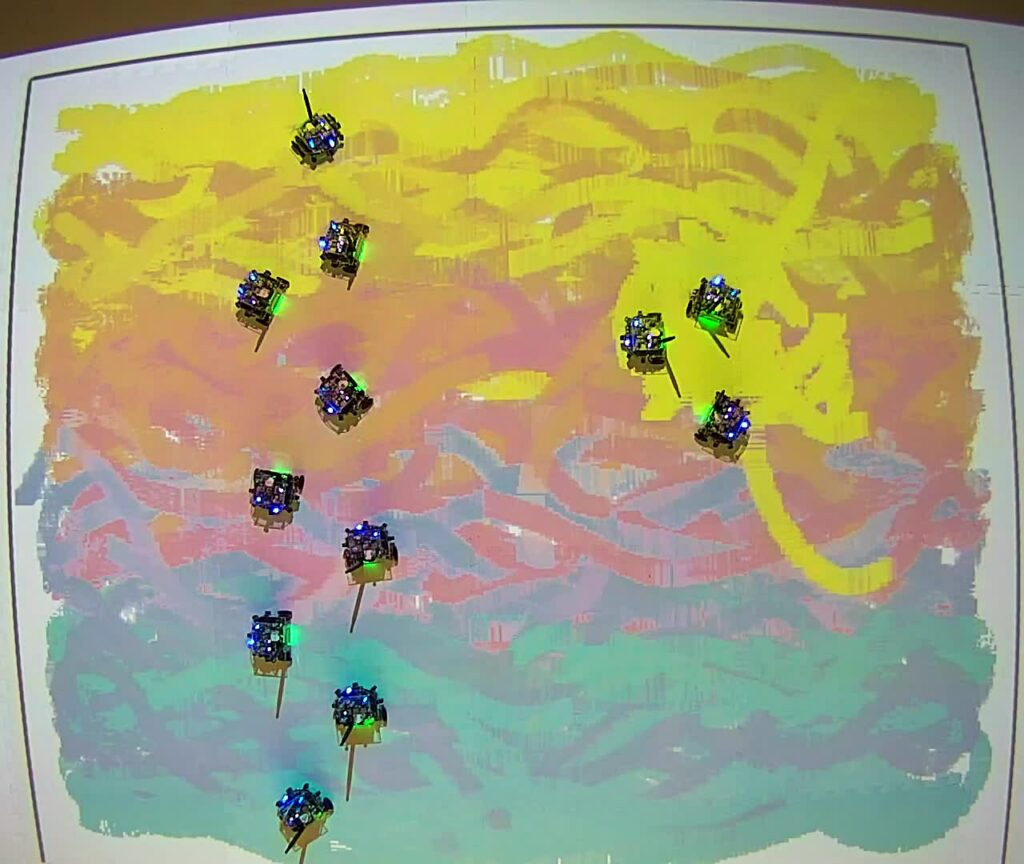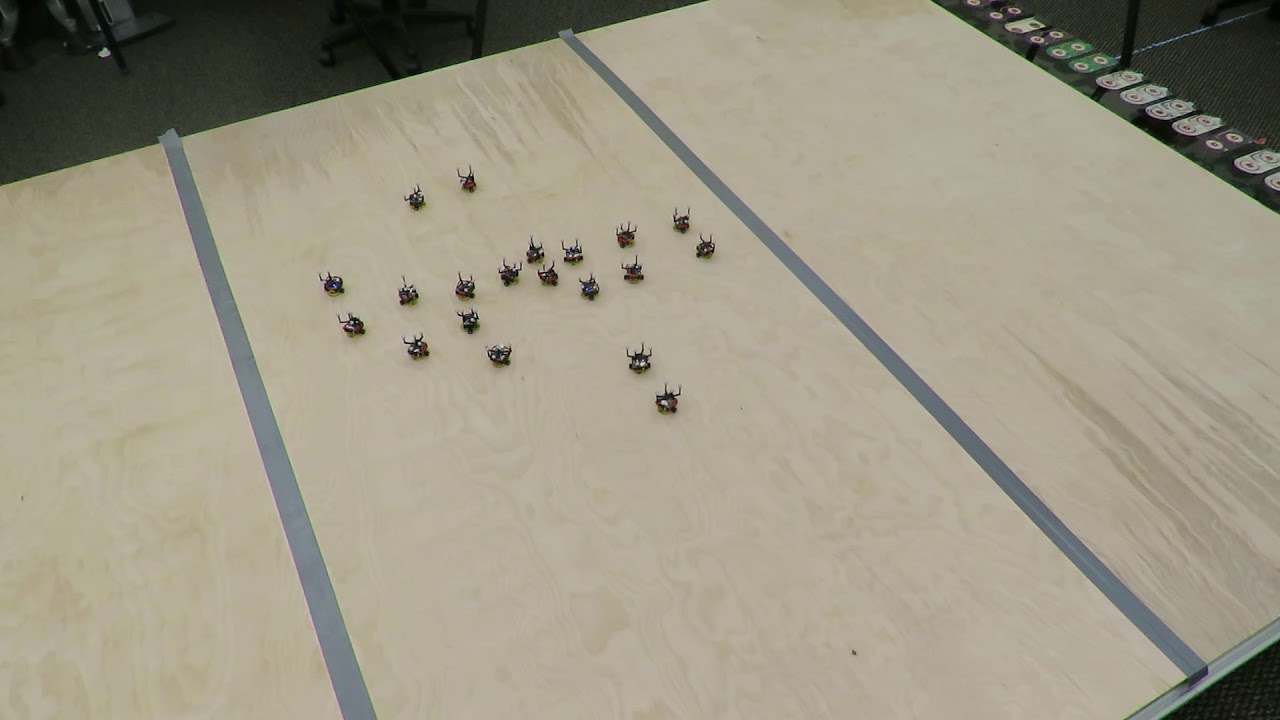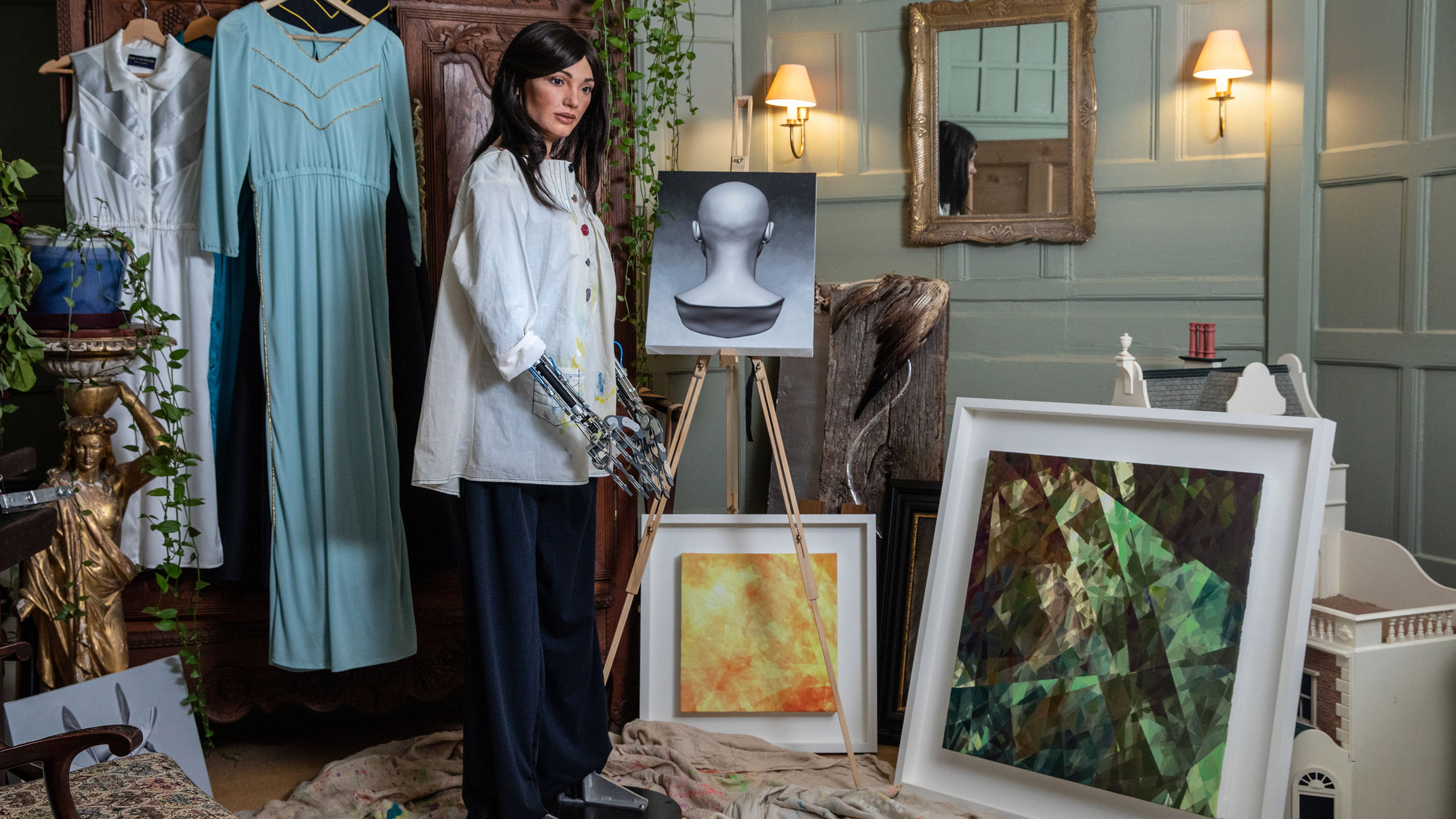© 2000-2023 - Enkey Magazine - All rights reserved
ENKEY SNC - VAT ID IT03202450924 / REA Code CA253701 - Phone. 078162719
Robot painters are getting increasingly versatile. In the past we have told you how an artistically inclined robot was capable of tracing Da Vinci’s Mona Lisa. Enormous as the achievement was, it’s but the tip of the iceberg. Robot painters nowadays are perfectioning their teamwork, which may lead to yet more wonders.
Although the concept of a bohemian group of robotic artists seems something out of a sci-fi story, life’s once more proved weirder than fiction. Some months ago in Georgia a team of scientists were able to engage a swarm of twelve robot painters over a common project.
The robot painters were naturally attuned to their team venture and crafted some highly suggestive abstract paintings. And we aren’t talking rough, tremulous sketches – but actual works of art by multiple authors. Robotic as they may be.
Why art and robotics work well together
To be fair, the amazing Georgia experimnt isn’t the first exploit of robot painters. Art and robotics, when combined, seem to lend each other well to success, paving the way to the new frontiers of technology. The importance of this field of research, however, is not merely academic.
Art requires a thorough hand control, which is a fundamental development for many braches of modern-day robotic studies. Ever since I-Cub took its first, hesitant steps on the scientific science, robotics has come a long way. Robot painters have fluid arms, moving naturally in a way that resembles actual human limbs. A broader range of movements translantes into new evelopments for medical prosthetic limbs.

But there’s more. The extraorinary mobility needed for robot painters may bring technological progress into a variety of different branches, ranging from medicine to industry, to a number of other infrastructures.
Thus, art becomes a sort of gym for robot painters. Automatons learn to become more dexterous and acquire new abilities whilst painting. However, there’s another pivotal aspect about the Georgia experiment that should not be overlooked.
The swarm of robot painters
The first papers on the swarm of robot painters were first publishe on “Frontiers and Robotics and AI” and describe the scope of the experiment. The twelve little robots were programmed to move over the canvas in a similar way to a swarm of bugs. The experiment was meant to test their coordination in group, and how it affected each robot’s individual autonomy.
Every robot was called to contribute to a collective work of abstract art, with a common unity of vision, making it an actual group project rather than unconnected individual efforts.

The experiment, led by researcher Maria Santos and her team, proved successful. The robot painters were perfectly in synch, and painted several abstract artworks in short sequence.
On a closer observation, the robot painters works reveal some surprising details. Even though we’re talking abstract art, there’s nothing impersonal or casual about it. The color sequence and flow are naturally balanced and the overall result isn’t too terribly different from what a human artist may achieve.
Robot painters in the world
As we’ve seen, the robot painters from Georgia were not the first foray into robotic arts. On this page you can find out more about Amico, a robot that successfully attempted to sketch Leonardo’s Mona Lisa.
The purpose of these robots is not so much that of pursuing art as a past time but as an actual mission. In Amico‘s case, the robot itself was a tribute to Da Vinci‘s visionary genius both in art and as an inventor whose studies helped shape modern electronics).
Amidst all the robot painters in the world, a singular record is that of a feminine artist. Ai-Da‘s artistic talents aren’t limited to painting; this robot can also sculpt and shoot videos.

The human-like android is run by an exremely advanced Artificial Intelligence, and is the key highlight in the installation titled Do Robots Dream of Electric Bees?, on display in Annka Kultys Gallery (London).
Ai-Da‘s creator Aidan Meller described the android itself as an artistic masterpiece – and the first Artificial Intelligence to run a personal art gallery. Her subjects range from a powerful stance against consumerism and power abuse, to social degradation and even ecology, with a particular regard for biodiversity, climate changes and its effects on endangered species, like bees.
This post is also available in:
![]() Italiano
Italiano
